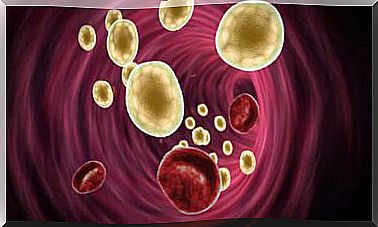Symptoms In Women That Warn Of Possible Thyroid Cancer
Thyroid cancer is a disease that, in its early stages, usually does not have any symptoms. Therefore, it is not easy to detect until it begins to grow. So, one of the most noticeable first symptoms is the presence of nodules on the front of the neck, that is, a lump that can be felt through the skin.
Additionally, it is possible that the person has pain in the throat and neck, difficulty swallowing and breathing, cough, hoarseness and other discomforts that we will see in more detail later.
The thyroid, the gland that regulates metabolism and more
The thyroid is a gland whose main objective is not only to regulate metabolism. The experts of the Spanish Association of Thyroid Cancer explain that:
These hormones are essential for the body because they help control and perform various functions. So, when the body has adequate levels of TSH, T3 and T4, its organs can function properly, have energy and carry out various processes, even at the cognitive level.
If the thyroid increases its activity abnormally, the alteration is called hyperthyroidism, and if its activity decreases, then it is hypothyroidism.
Thyroid cancer

When there is an abnormal growth of malignant cells in the thyroid, this gland stops working properly and the body loses its balance. For this reason, health suffers in a notorious way.
The causes of this disease are still unknown, however, certain risk factors have been determined:
- Be female.
- Be over 40 years old.
- Having been exposed to high levels of radiation.
- Having a family history of thyroid cancer.
Women are at higher risk of suffering from this disease after they have gone through menopause or while they are in this period.
Symptoms
According to the experts of the American Cancer Association, the symptoms that may be “warning” of the presence of thyroid cancer are the following:
- Hoarseness.
- Chronic cough.
- Difficulty speaking
- Lump in the neck (nodule).
- Persistent throat and neck pain.
- Swollen lymph nodes in the neck.
- Difficulty and discomfort when swallowing food (this usually happens when the nodule is large).

Types of thyroid cancer
Depending on the type of thyroid cancer, the treatment and prognosis will vary.
Papillary carcinoma
It is the most frequent (70% of cases) and is usually suffered by women with a history of cervical irradiation. The tumor is well differentiated and may have calcifications.
In patients with advanced disease it can metastasize to the cervical nodes. The growth of the nodule is slow and painless.
Follicular carcinoma
It is the second most diagnosed and appears in people who have had or have a goiter, especially those over 50 years of age. The tumor can grow to be the same size as the normal thyroid and is often difficult to detect.
It spreads through the blood and metastasizes to the lungs and bones. Also by the lymphatic route. The nodule is painless of variable consistency and hard to the touch.
Anaplastic carcinoma
It appears after 65 years in patients with previous problems such as goiter or also papillary and follicular carcinomas. The tumor is usually like a shapeless mass that invades the gland. It can metastasize to the nodes. It is painful, grows fast, and is hard in consistency.
Medullary carcinoma
It metastasizes early in the lymphatic and blood tracts. It is common in women and especially in those who are over 50 years of age. In some cases it appears in people with a family history. It is detected through a histological study.
Thyroid lymphoma
It is a cancer that begins in cells called lymphocytes, which are part of the body’s immune system. Growth is very slow and is more common in older women who have had another disease related to the gland, such as Hashimoto’s thyroiditis.
Medical tests to detect thyroid cancer

The studies that are usually carried out to detect a possible thyroid cancer are the following that we are going to comment on.
Ultrasonic scan
Allows viewing of the entire neck area (including the thyroid) to look for nodules or lumps. In the case of detecting them, you will also be able to know if they are solid or full of liquids. Likewise, cysts are not always synonymous with cancer: they are often benign formations.
Biopsy
A needle stick is done to take a quantity of tissue and then it is analyzed by a pathologist. An ultrasound scanner can be used to guide the needle and pain relievers are given to make the area numb. This test is done once a nodule has been found.
Computerized axial tomography (CT)
With this test , not only the neck but also the chest is explored to see if there are signs of cancer in other places in the body, especially in the lungs. That is, it detects whether the cancer has spread to soft tissues.
In addition to performing diagnostic tests, certain follow-up tests are also scheduled in case something is detected in the patient.









